This article was co-authored by Karin Lindquist, a trusted member of wikiHow's volunteer community. Karin Lindquist earned a BSc in Agriculture as an Animal Science major from the University of Alberta, Canada. She has over 20 years of experience working with cattle and crops. She's worked for a mixed-practice veterinarian, as a sales representative in a farm supply store, and as a research assistant doing rangeland, soil, and crop research. She currently works as a forage and beef agriculture extension specialist, advising farmers on a variety of issues relating to their cattle and the forages they grow and harvest.
wikiHow marks an article as reader-approved once it receives enough positive feedback. In this case, 100% of readers who voted found the article helpful, earning it our reader-approved status.
This article has been viewed 73,549 times.
Learn more...
This article is only a basic guide of how a Caesarian section (or C-section) is done on a cow or heifer that is having trouble calving. Do not continue pulling on the calf, otherwise you will injure or kill the calf and/or the dam if the following occurs, which is a sign that a C-section must be performed on the animal: 1)the calf is unable to make adequate progress through natural birthing with you and one or two other people pulling using chains or a calf puller after around 15 minutes of applied traction;[1] 2) the calf is simply too large to fit through the birth canal because the head and both elbows cannot be pulled into the pelvic canal, even with use of a come-along device like a calf-puller without causing significant injury or death to that calf.
DO NOT use this guide as a means to do any C-sections yourself. Unless you have a doctorate in veterinary medicine or are a licensed veterinarian and have done C-sections on animals, DO NOT ATTEMPT THIS SURGERY AT ANY TIME, UNDER ANY PENALTY OR CIRCUMSTANCES. This article is only a guide to give you an understanding of how C-sections are performed, it should never mean that you can perform one yourself. If you have a cow that is having difficulty calving please contact your local large animal veterinarian IMMEDIATELY.
Steps
-
1Secure the head. The cow or heifer must have her head secured in a head-gate to prevent her from escaping before or during the surgery. You may confine the cow to a head gate of a handling facility you already have, or a calving or maternity pen specifically suited for this very practice.
-
2Shave down the area where the incision will be.[2] Most C-sections are performed on the left side of the cow, or according to whichever side the cow is laying on if she's a downer cow and cannot get up without risk of collapsing again. In this case with a standing cow, the left flank--located just behind the last rib and before the hook of the pelvis--is shaved. A quarter inch of hair--or less--should remain afterwards.
-
3Scrub the shaved area. Squirt some pre-podine scrub onto the area that has been shaved, and rub down the area with hands, a sponge or scrub brush.[3] Repeat until the area is clean or free of any tag (dirt or feces on the hide).
-
4Wash the area down with 70% Alcohol. This will further disinfect the area.
-
5Local anaesthetic. Administer local anaesthetic to spinal area (which involves a long needle inserted into a specific area of the spinal cord) that incision will be done on. Anaesthetic should kick in a few seconds after being administered, "deadening" or numbing the area so that the cow will feel no pain when she is cut open.
-
6Make the incision. Make an incision through the skin and into the abdominal cavity. The incision itself is usually no longer than 12 to 16 inches (30.5 to 40.6 cm) in length.
-
7Reach inside the abdominal cavity to find the uterus. You should be able to feed the hard body of a calf through the uterine wall immediately where the incision was made.
-
8Pull the uterus to the outside as much as you can (be careful not be to be too forceful about it).[4] Make an incision in the uterine wall, careful not to cut the calf in the process. This incision should be a few inches shorter than the previous one.
-
9Reach into the uterus and grab one of the calf's hind feet if it's in normal presentation. Pull that leg through the incision.
-
10Rupture the amniotic sac, and grasp the hind leg that was just pulled out in the previous step, holding the uterus in position against the outer incision. Attach a calving chain to that leg, then have a helper hold that chain up.
-
11Reach in to find the other hind leg. Attach the second calving chain to that leg. Have your helper hold that chain up
-
12Pull out the calf. Get your helper to help you to pull the calf out of the uterus as quickly as possible. You may need an extra set of hands or two if the calf is particularly big and heavy, because the calf must be pulled up and out to avoid further damage to the incisions.
-
13Get the calf breathing. Get the person helping you (and other folks watching you do the surgery) to get the calf breathing, as described in How to Help a Cow give Birth. You may want to get them to give the calf a bottle of colostrum right away as well.
-
14Remove the placenta. Reach in the uterine cavity again and begin to remove the placenta from the uterine wall. This step is optional, since some vets like to remove the placenta while the uterine wall is still open. Other vets prefer to leave the placenta in the cow and let her expel it herself.
-
15Clean the cow's abdominal cavity. With a bucket of warm water with about 10 ml of Solution mixed in, wash out the abdominal cavity and the skin to clean it of amniotic fluid and blood from the incisions and pulling out the calf. Repeat until area is clean.
-
16Suture up the uterine incision, then push it back into place.[5]
-
17Suture up the abdominal wall and skin incision.
-
18With another bucket of warm water and iodine Solution, wash down the incision to the skin.
-
19Release the cow after she has recovered from the local anaesthetic and allow her to be with her new calf.
Community Q&A
-
QuestionIs giving birth messy?
 KarinTop AnswererIt always is. With the somewhat gooey amniotic fluid, birthing membranes, poop from the mother, among other things, it's not a job where you can be a midwife to a cow with your best dressy outfit on!
KarinTop AnswererIt always is. With the somewhat gooey amniotic fluid, birthing membranes, poop from the mother, among other things, it's not a job where you can be a midwife to a cow with your best dressy outfit on! -
QuestionWhat types of tissues are incised during cesarean section?
 Community AnswerThe skin, then the abdominal muscles (cutaneous, external abdominal oblique, internal abdominal oblique and the transverse abdominal muscles), then the uterine wall.
Community AnswerThe skin, then the abdominal muscles (cutaneous, external abdominal oblique, internal abdominal oblique and the transverse abdominal muscles), then the uterine wall. -
QuestionWhat anesthetics will the veterinarian use?
 Community AnswerDepends on what's available, and what your vet chooses to use. Lignocaine solution is used as a local anaesthetic to freeze the site where the incision into the cow will be made to pull out the calf. Talk with your vet to see what he/she uses for c-sections in cattle.
Community AnswerDepends on what's available, and what your vet chooses to use. Lignocaine solution is used as a local anaesthetic to freeze the site where the incision into the cow will be made to pull out the calf. Talk with your vet to see what he/she uses for c-sections in cattle.
Warnings
- Sterile instruments should be used for this surgery, as infection can and will take place if proper hygienic and sterile practices are not followed.⧼thumbs_response⧽
- There is certain risk of having to remove the placenta. Some vets are better at it than others, but an injection of antibiotics needs to be administered to a cow that has had her placenta removed via the incision. Removal of the placenta by humans have a much higher chance of inviting uterine infection than if a cow expelled the placenta herself.⧼thumbs_response⧽
Things You'll Need
-
Basically, a C-section kit requires:
- Obstetrical (OB) or calving chains
- Handles for the calving chains
- Sterile latex gloves
- Extra large slit drape
- Propylene-iodine Solution
- Propylene-iodine Scrub
- 2 large forceps, sterilized
- 4 large hemostats, sterilized
- Surgical blade and handle, sterilized
- Shoulder-length fingerless gloves
- OB suit
- Lidocane or any other local anaesthetic
- 1-long spinal needle (~4 inches long)
- 10 cc syringe
- Suture thread, sterilized
- LA200 or Oxymycine LA200
- Curved suture needles, sterilized
- Uterine pills to put in uterus to prevent infection
- Surgical scissors\
- 3 gallon (11.4 L). bucket of warm water.
- Shaver and clippers
- 70% Alcohol
- Surgical scrub sponge/brush
- A licensed veterinarian who knows how to properly do a C-section
- A cow or heifer that is having difficult birthing
- Head-gate or head-catch with a gate that can catch the cow/heifer, then opens up to allow the vet to perform the surgery
- Calf sled (if necessary)
- Table large enough to put the vet's supplies on and is easy for the vet to reach
References
- ↑ https://www.ncbi.nlm.nih.gov/pmc/articles/PMC2387259/
- ↑ https://openventio.org/wp-content/uploads/Caesarean-Operation-in-Cow-Due-to-Prolonged-Pregnancy-VMOJ-5-141.pdf
- ↑ https://openventio.org/wp-content/uploads/Caesarean-Operation-in-Cow-Due-to-Prolonged-Pregnancy-VMOJ-5-141.pdf
- ↑ https://www.acvs.org/large-animal/cesarean-section-cattle
- ↑ https://www.ncbi.nlm.nih.gov/pmc/articles/PMC2387259/


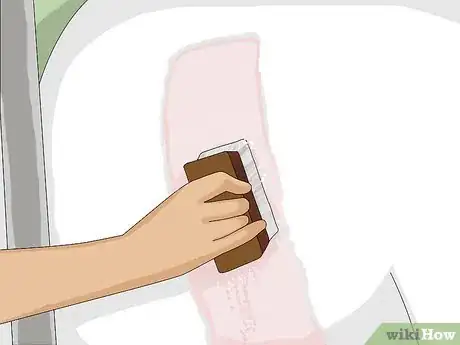

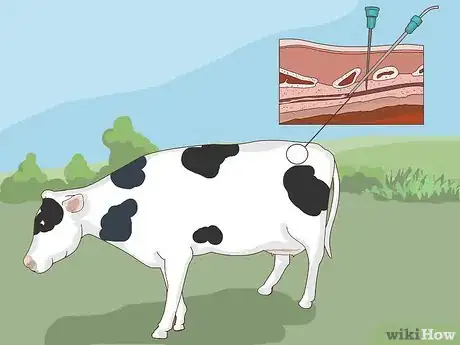
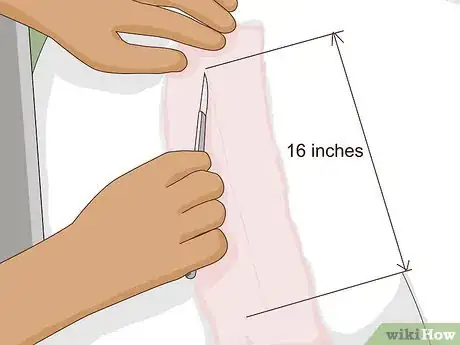

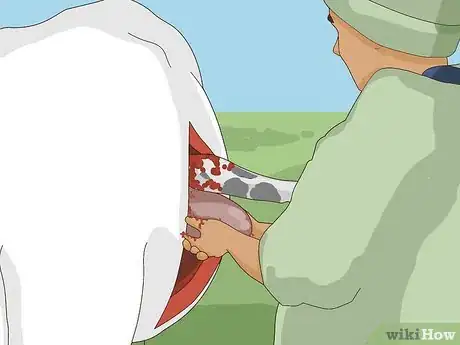
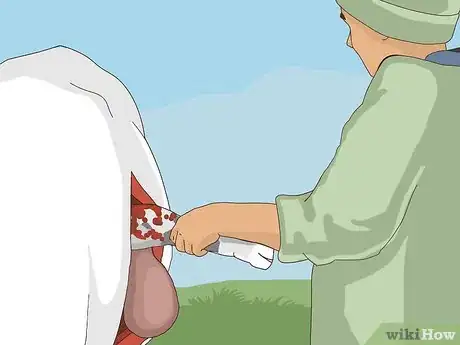
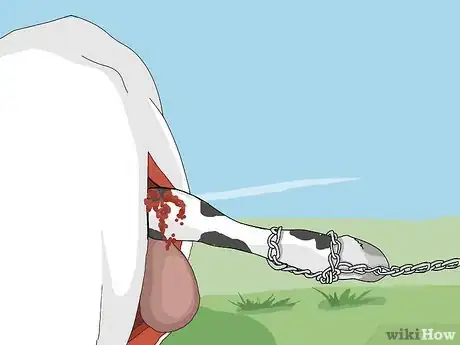

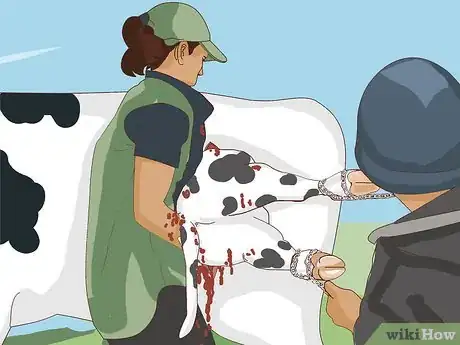

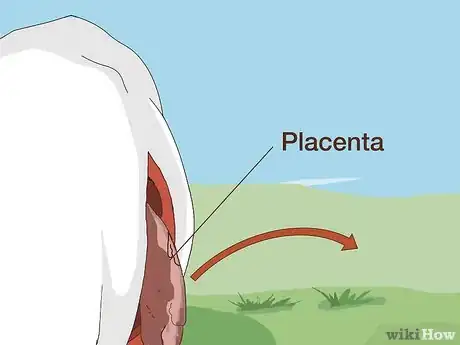
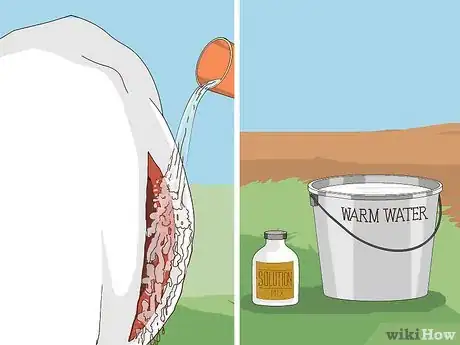
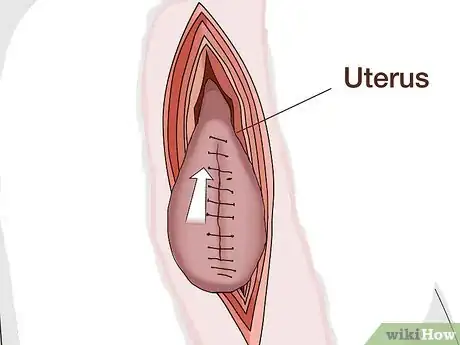
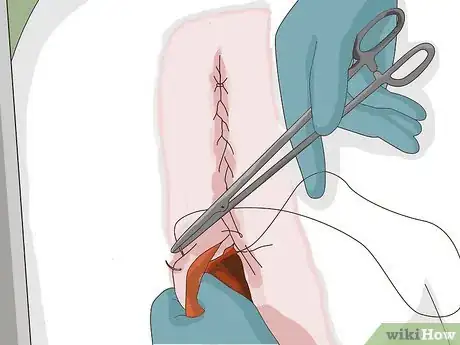



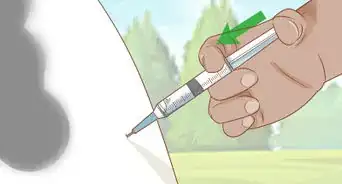
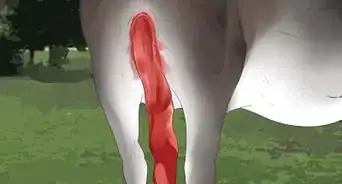



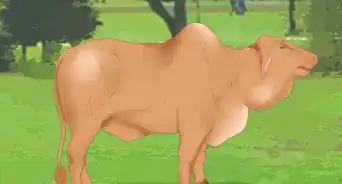


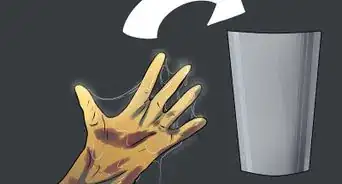
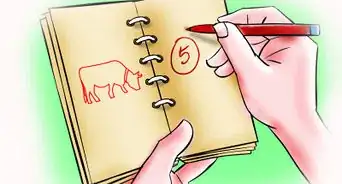
-in-Cattle-Step-6.webp)






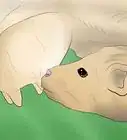

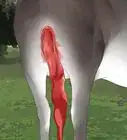

Medical Disclaimer
The content of this article is not intended to be a substitute for professional medical advice, examination, diagnosis, or treatment. You should always contact your doctor or other qualified healthcare professional before starting, changing, or stopping any kind of health treatment.
Read More...